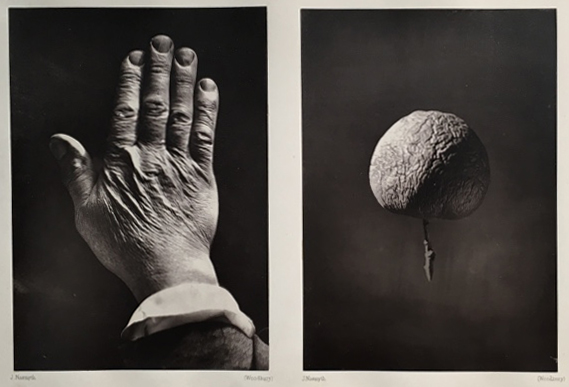
To make sense of the heavens, astronomers James Nasmyth and James Carpenter tried bringing them down to earth. Their photographically illustrated study of the moon (1874) advances several theories on “physiography”: the origins of lunar features visible through a telescope. In this pair of plates, photographer Nasmyth proposes understanding lunar “mountains” by an analogy—not to alpine topography on earth, but to wrinkles in the skin of people and fruit. The authors use the three-way visual correspondence to argue that a bygone epoch of surface saturation gave way, over time, to the dry, craggy formations observable on the present-day moon.
James Nasmyth (1808–1890), Back of Hand and Wrinkled Apple, to Illustrate the Origin of Certain Mountain Ranges, Resulting from Shrinking of the Interior. Plate 11 in James Nasmyth and James Carpenter, The Moon: Considered as a Planet, a World and a Satellite. London: John Murray, 1874. Woodburytypes, 11.6 x 8.1 cm each, mounted to one leaf. Purchased as the gift of Peter J. Cohen, 2016.25.
